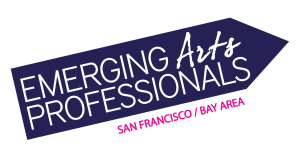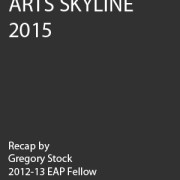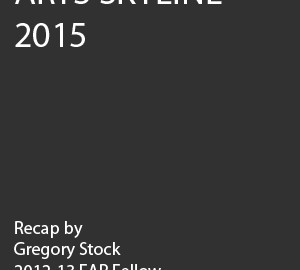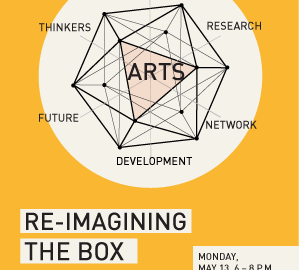 What will the Bay Area arts skyline look like in 2015? The cultural landscape is constantly evolving in the Bay Area. New openings, closings, and innovations are inevitable in a metropolitan area. On March 27, EAP hosted a panel of leaders in the arts fields at the Center for New Music to discuss the challenges facing local arts institutions, small and large.
What will the Bay Area arts skyline look like in 2015? The cultural landscape is constantly evolving in the Bay Area. New openings, closings, and innovations are inevitable in a metropolitan area. On March 27, EAP hosted a panel of leaders in the arts fields at the Center for New Music to discuss the challenges facing local arts institutions, small and large.
The panel featured Barrett Shaver, director of development, SF JAZZ; Christopher Borg, executive director, Community Music Center; Gina Basso, public programs, San Francisco Museum of Modern Art; and Jack Carpenter, production director, SF Ethnic Dance Festival.
Though looking towards the future was ultimately on everyone’s minds, the conversation stayed within the current context. Themes of the conversation revolved around staffing, capital campaigns, space, and project-based venues versus an actual building. We wanted to share some kernels of the experience with our larger network. Also, we love to continue the conversation beyond the brick and mortar, so feel free to add your comments.
Adam Fong, executive director of both Emerging Arts Professionals / SFBA and the Center for New Music, took the brave task of navigating the arts skyline with consistency and curiosity.
Some highlights of the current Bay Area Arts Skyline
The Exploratorium closed in Fall 2012 at the Palace of Fine Arts and will re-open on April 17 at Pier 15 with a new building.
The SFMOMA will be closing its doors for three years on June 2 to make way for construction of a 235,000 square foot addition. Until early 2016, the SFMOMA will present new art experiences around the Bay Area as the building is transformed.
SF JAZZ recently opened a brand new facility on the corner of Franklin and Fell streets to wide acclaim, moving from project-based to a cultural institution.
The Community Music Center will be expanding with the purchase of a neighboring house. Christopher Borg says it will make CMC more of a “campus.” CMC has been in the same building in the Mission district since 1921.
World Arts West, the organization hosting the San Francisco Ethnic Dance Festival, continues to have the conversation about finding a permanent home, believing they need to make the move to a more established organization within the city.
There is a light that never goes out
Overall, the tone is continuing to strive to be experimental with space, programming, and money. As we continue to move through the economic recession towards recovery, new spaces can mean new opportunity and hopefully engaging new audiences with a stronger brand than project-based models. Though institutions grow and consolidate, seeking new ways to engage audiences is at the heart of the conversation. And as Ms. Basso said, the SFMOMA is screwing little light bulbs across the city throughout 2016. But, don’t worry the lights won’t go out!
About Gregory Stock
Gregory coordinates public programs at the Fine Arts Museums of San Francisco along with a team of four under the direction of Renee Baldocchi. At the de Young, he provides support and logistics of Friday Nights at the de Young, a weekly “art happening” public and free event for all ages themed to the permanent collection and special exhibitions. At the Legion of Honor, he coordinates the Chamber Music Series and special exhibition programming. Other programs include special lectures and academic symposiums for special exhibitions. Interests cross between public art, digital tools, collaboration and social enterprise. He has been in the Bay Area for four years and graduated from Saint Louis University with a BA in American studies and history.







